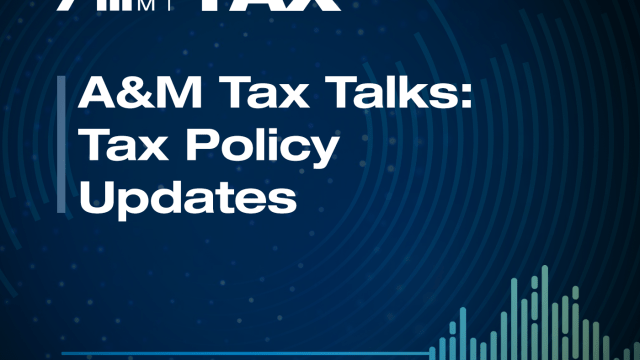Improved Tax Compliance Through Technology and Transformation
Executive Overview
In today’s complex business environment, tax compliance is more than a regulatory mandate — it is an opportunity to drive strategic advantage. Traditionally, companies have relied on outsourcing engagements with Big Four firms or other providers to handle tax compliance. While these firms leverage technology and offshoring to optimize their internal operations, a significant gap remains on the client side. The current model leaves clients burdened with manually sourcing, cleaning and classifying data from disparate systems. This disconnect means that despite promising cost efficiencies, the expected operational benefits often fall short, leaving CFOs and global tax leaders frustrated by a process that fails to deliver the anticipated value. The solution lies in a comprehensive, client-focused approach that reimagines tax compliance as an integrated process that aligns the entire data lifecycle with the compliance engagement.
The Challenges With Traditional Tax Compliance
At the beginning of each tax period, clients are inundated with an information request list from their service provider. This list demands vast amounts of data extracted from various systems — enterprise resource planning, accounts payable, accounts receivable and fixed asset registers, to name a few. The responsibility of gathering, standardizing and validating this data falls squarely on the client, requiring substantial manual effort. While outsourcing providers have invested in technology to automate their internal processes, these improvements do not generally extend to the client side. The technology deployed is geared toward processing the data once it is received, rather than improving the process by which data is collected and refined.
The result is an asymmetrical engagement: The service provider benefits from streamlined operations and cost savings, yet the client continues to face the labor-intensive challenge of managing their own data. This misalignment creates inefficiencies and leaves clients struggling with persistent data issues. Manual data handling not only consumes valuable time but also increases the risk of errors that can compromise the accuracy of tax filings. In an era where every minute spent on data preparation represents lost strategic opportunity, this fragmented approach to tax compliance is increasingly untenable.
A Holistic Transformation for Tax Compliance
The solution lies in a comprehensive, client-focused approach that reimagines tax compliance as an integrated process. Instead of treating data collection and reporting as isolated tasks, this model aligns the entire data lifecycle with the compliance engagement.
Data Gathering
The transformation begins at the source: Rather than requiring clients to reformat data into multiple templates, a collaborative approach automates the extraction of information directly from existing systems. This establishes one single source of truth, eliminating inconsistencies and reducing the time required for data preparation.
Once Gathered, Refine the Data
Once the data is collected, the next step is to refine it. Automation is applied to clean, validate and standardize the raw data. Errors are identified and corrected automatically, ensuring that the information is accurate and consistent. This streamlined process significantly reduces the manual burden on the client and minimizes the risk of inaccuracies. With clean, reliable data at hand, the process moves to the next phase: transforming data into actionable insights for tax compliance.
Analyze and Classify
In this phase, automated systems analyze and classify the refined data. For example, expenses are sorted into categories such as deductible, nondeductible or partially deductible. Similarly, items related to fixed assets are evaluated to determine if they should be capitalized or expensed. This precise classification is essential for accurate tax reporting and for making the necessary adjustments during the filing process. However, such exercise can take weeks in a complex organization where there is no or very little automation.
Once the data is analyzed and categorized, it is then prepared into packages that are immediately usable by the final reporting systems. Whether for corporate income tax, indirect tax, operational transfer pricing, or regulatory frameworks like BEPS Pillar 2 and FATCA/CRS, the process remains consistent: Data is seamlessly collected, refined, analyzed and formatted for efficient compliance reporting.
This holistic approach does more than streamline operations — it transforms tax compliance into a strategic asset. By automating the client-side data management, organizations can achieve significant cost savings and improve overall operational efficiency. Enhanced data accuracy and consistency lead to better decision-making and more precise forecasting. Real-time dashboards and reporting tools further enhance transparency, giving CFOs and global tax leaders clear visibility into the entire compliance process. Moreover, by reducing manual intervention, the risk of errors is minimized, which in turn lowers the chance of compliance issues and the associated penalties.
Implement Continuous Improvement
A key advantage of this integrated model is its capacity for continuous improvement. By incorporating feedback loops into each stage of the process, the system evolves over time. Each tax period provides insights that inform further refinements, ensuring that the process remains agile and capable of adapting to new regulatory requirements. This dynamic approach not only future-proofs the compliance function but also positions the organization to respond swiftly to changes in global tax regulations.
How A&M Can Help
At Alvarez & Marsal, we understand that the challenges inherent in traditional tax compliance engagements extend well beyond the service provider’s internal processes. Our approach is fundamentally different. By embracing a comprehensive, client-side transformation, we help organizations automate the entire lifecycle of data — from initial collection through final reporting. We work closely with our clients to implement tailored solutions that streamline data management, enhance accuracy, and provide real-time transparency into the compliance process. If you are ready to move beyond the outdated model of tax outsourcing and unlock sustainable improvements in efficiency and cost savings, let’s connect. Together, we can transform your tax compliance function into a strategic asset that drives your organization’s long-term success.



